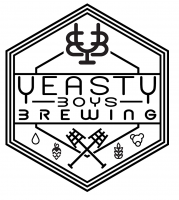Brew Log History
Target 20°C
Ambient: {{ stats.ambient | number:0 }} °C
OG: {{ stats.ogGravity | number:3 }}
Attenuation: {{ stats.attenuation | number:2 }}%
Calories: {{ stats.calories | number:1 }} / 330ml
Carbs: {{ stats.carbs | number:1 }} g / 330ml
Readings: {{ readingsCount | number }}
{{ formatHeaderDate(dates.navStart) | date:'mediumDate' }} to {{ formatHeaderDate(dates.navEnd) | date:'mediumDate' }}
Last Updated: {{ stats.lastupdated.ago }} from {{ stats.lastupdated.source }}
Hops
|
Amount
|
Variety
|
Cost
|
Type
|
AA
|
Use
|
Time
|
IBU
|
Bill %
|
|
28 g |
Nugget28 g Nugget Hops |
|
Pellet |
15.1 |
Boil
|
60 min |
24.16 |
100% |
|
28 g
/ $ 0.00
|
Hops Summary
|
Amount
|
Variety
|
Cost
|
IBU
|
Bill %
|
|
28 g |
Nugget (Pellet) 28 g Nugget (Pellet) Hops |
|
24.16 |
100% |
|
28 g
/ $ 0.00
|
Mash Guidelines
|
Amount
|
Description
|
Type
|
Start Temp
|
Target Temp
|
Time
|
|
28 L |
|
Infusion |
-- |
67 °C |
70 min |
|
|
Cast |
Temperature |
-- |
75 °C |
15 min |
|
32 L |
|
Sparge |
-- |
80 °C |
60 min |
Starting Mash Thickness:
2.8 L/kg
|
Other Ingredients
|
Amount
|
Name
|
Cost
|
Type
|
Use
|
Time
|
|
10 g |
Calcium Chloride (dihydrate)
|
|
Water Agt |
Mash |
1 hr. |
|
9 g |
Gypsum
|
|
Water Agt |
Mash |
1 hr. |
|
8.52 ml |
Lactic acid
|
|
Water Agt |
Mash |
1 hr. |
|
1 each |
Whirlfloc
|
|
Water Agt |
Boil |
15 min. |
|
1 tsp |
Wyeast - Beer Nutrient
|
|
Water Agt |
Boil |
15 min. |
|
1 each |
Orange (Zest)
|
|
Flavor |
Kegging |
5 days |
|
3 ml |
vanilla
|
|
Flavor |
Kegging |
0 min. |
Priming
|
Method: co2
CO2 Level: 2.25 Volumes |
Target Water Profile
Balanced Profile
Notes
15A. Irish Red Ale
Overall Impression: An easy-drinking pint, often with
subtle flavors. Slightly malty in the balance sometimes with an
initial soft toffee/caramel sweetness, a slightly grainy-biscuity
palate, and a touch of roasted dryness in the finish. Some
versions can emphasize the caramel and sweetness more, while
others will favor the grainy palate and roasted dryness.
Aroma: Low to moderate malt aroma, either neutral-grainy or
with a lightly caramelly-toasty-toffee character. May have a
very light buttery character (although this is not required). Hop
aroma is low earthy or floral to none (usually not present).
Quite clean.
Appearance: Medium amber to medium reddish-copper
color. Clear. Low off-white to tan colored head, average
persistence.
Flavor: Moderate to very little caramel malt flavor and
sweetness, rarely with a light buttered toast or toffee-like
quality. The palate often is fairly neutral and grainy, or can take
on a lightly toasty or biscuity note as it finishes with a light
taste of roasted grain, which lends a characteristic dryness to
the finish. A light earthy or floral hop flavor is optional.
Medium to medium-low hop bitterness. Medium-dry to dry
finish. Clean and smooth. Little to no esters. The balance tends
to be slightly towards the malt, although light use of roasted
grains may increase the perception of bitterness slightly.
Mouthfeel: Medium-light to medium body, although
examples containing low levels of diacetyl may have a slightly
slick mouthfeel (not required). Moderate carbonation. Smooth.
Moderately attenuated.
Comments: Several variations exist within the style, which
causes the guidelines to be somewhat broad to accommodate
them. Traditional Irish examples are relatively low in hops, are
grainy with a slight roast dryness in the finish, fairly neutral in
general. Modern export Irish examples are more caramelly and
sweet, and might have more esters. American craft versions are
often more alcoholic versions of the Irish export examples. An
emerging Irish craft beer scene is exploring more bitter
versions of traditional examples. Finally, there are some
commercial examples that sound Irish but are essentially
International Amber Lagers, with sweetish palates and little
bitterness. These guidelines are written around the traditional
Irish examples, with slight extensions for export Irish versions
and modern craft Irish versions.
History: While Ireland has a long ale brewing heritage, the
modern Irish Red Ale style is essentially an adaptation or
interpretation of the popular English Bitter style with less
hopping and a bit of roast to add color and dryness.
Rediscovered as a craft beer style in Ireland, today it is an
essential part of most brewery lineups, along with a pale ale
and a stout.
Characteristic Ingredients: Generally has a bit of roasted
barley or black malt to provide reddish color and dry roasted
finish. Pale base malt. Caramel malts were historically
imported and more expensive, so not all brewers would use
them.
Style Comparison: A less-bitter and hoppy Irish equivalent
to an English Bitter, with a dryish finish due to roasted barley.
More attenuated with less caramel flavor and body than
equivalent-strength Scottish ales.
Vital Statistics: OG: 1.036 – 1.046
IBUs: 18 – 28 FG: 1.010 – 1.014
SRM: 9 – 14 ABV: 3.8 – 5.0%
Commercial Examples: Caffrey’s Irish Ale, Franciscan Well
Rebel Red, Kilkenny Irish Beer, O’Hara’s Irish Red Ale,
Porterhouse Red Ale, Samuel Adams Irish Red, Smithwick’s
Irish Ale

Last Updated and Sharing

- Public: Yup, Shared
- Last Updated: 2019-08-22 13:36 UTC
For quick copying and pasting to a text based forum or email.
Click the Download as HTML file button below.
Recipe costs can be adjusted by changing the batch size. They won't be saved but will give you an idea of costs if your final yield was different.
|
Cost $ |
Cost % |
| Fermentables |
$ |
|
Steeping Grains
(Extract Only) |
$ |
|
| Hops |
$ |
|
| Yeast |
$ |
|
| Other |
$ |
|
| Cost Per Barrel |
$ 0.00 |
|
| Cost Per Pint |
$ 0.00 |
|
| Total Cost |
$ 0.00 |
|
Discussion about this recipe:





